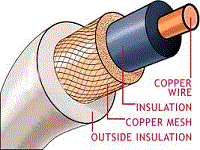Cells
There are many different types of primary cells. Because of such factors as cost, size, ease of replacement, and voltage or current needs, many types of primary cells have been developed.
The following is a brief description of some of the primary cells in use today.
The Manganese Dioxide-Alkaline-Zinc Cell is similar to the zinc-carbon cell except for the electrolyte used. This type of cell offers better voltage stability and longer life than the zinc-carbon type. It also has a longer shelf life and can operate over a wide temperature range. The manganese dioxide-alkaline-zinc cell has a voltage of 1.5 volts and is available in a wide range of sizes.
This cell is commonly referred to as the alkaline cell.
The Magnesium-Manganese Dioxide Cell uses magnesium as the anode material. This allows a higher output capacity over an extended period of time compared to the zinc-carbon cell. This cellproduces a voltage of approximately 2 volts.
The disadvantage of this type of cell is the production ofhydrogen during its operation.
The Lithium-Organic Cell and the Lithium-Inorganic Cell was developed as a high-energy cell. The main advantages of these types of cells are very high power, operation over a widetemperature range, they are lighter than most cells, and have a remarkably long shelf life of up to 20 years.
Always use caution when handling Lithium cells because they contain toxic materials under pressure. Do not puncture,recharge, short-circuit, expose to excessively high temperatures, or incinerate.
(back) (top) (next) (return to batteries page)

















